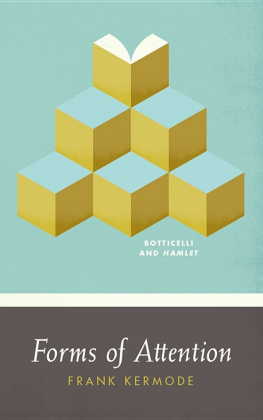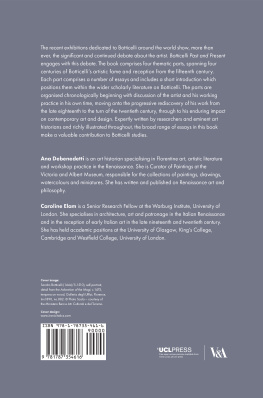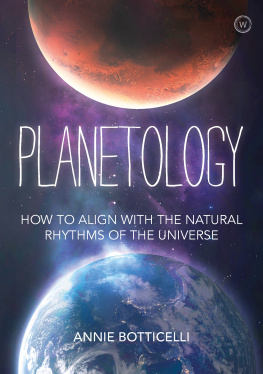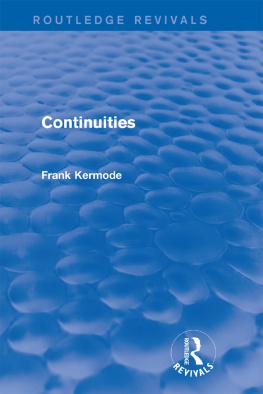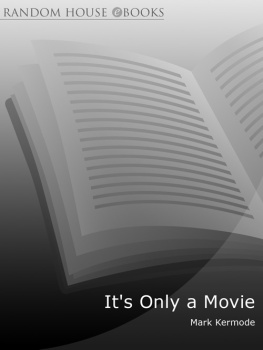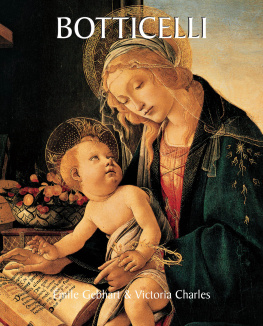Frank Kermode - Forms of Attention: Botticelli and Hamlet
Here you can read online Frank Kermode - Forms of Attention: Botticelli and Hamlet full text of the book (entire story) in english for free. Download pdf and epub, get meaning, cover and reviews about this ebook. publisher: The University of Chicago Press, genre: Science. Description of the work, (preface) as well as reviews are available. Best literature library LitArk.com created for fans of good reading and offers a wide selection of genres:
Romance novel
Science fiction
Adventure
Detective
Science
History
Home and family
Prose
Art
Politics
Computer
Non-fiction
Religion
Business
Children
Humor
Choose a favorite category and find really read worthwhile books. Enjoy immersion in the world of imagination, feel the emotions of the characters or learn something new for yourself, make an fascinating discovery.
- Book:Forms of Attention: Botticelli and Hamlet
- Author:
- Publisher:The University of Chicago Press
- Genre:
- Rating:4 / 5
- Favourites:Add to favourites
- Your mark:
- 80
- 1
- 2
- 3
- 4
- 5
Forms of Attention: Botticelli and Hamlet: summary, description and annotation
We offer to read an annotation, description, summary or preface (depends on what the author of the book "Forms of Attention: Botticelli and Hamlet" wrote himself). If you haven't found the necessary information about the book — write in the comments, we will try to find it.
Forms of Attention: Botticelli and Hamlet — read online for free the complete book (whole text) full work
Below is the text of the book, divided by pages. System saving the place of the last page read, allows you to conveniently read the book "Forms of Attention: Botticelli and Hamlet" online for free, without having to search again every time where you left off. Put a bookmark, and you can go to the page where you finished reading at any time.
Font size:
Interval:
Bookmark:
Frank Kermode (19192010) taught at University College London, the University of Cambridge, Columbia University, and Harvard University. His criticism was featured in the London Review of Books and the New York Review of Book, and his many books include The Art of Telling (1985), The Sense of an Ending (1967, revised 2000), Shakespeares Language (2000), The Age of Shakespeare (2004), The Genesis of Secrecy (2006), and Concerning E. M. Forster (2009).
The University of Chicago Press, Chicago 60637
Copyright 1985 by The University of Chicago
All rights reserved. Originally published 1985.
Paperback edition 2011
This volume was first published as part of the series, the Wellek Library Lectures at the University of California, Irvine (Frank Lentricchia, series editor).
Printed in the United States of America
20 19 18 17 16 15 14 13 12 11 1 2 3 4 5
ISBN-13: 978-0-226-43175-8 (paper)
ISBN-10: 0-226-43175-4 (paper)
ISBN-13: 978-0-226-43176-5 (e-book)
Library of Congress Cataloging-in-Publication Data
Kermode, Frank, 19192010.
Forms of attention : Botticelli and Hamlet /
Frank Kermode. Paperback ed.
p. cm.
ISBN-13: 978-0-226-43175-8 (pbk.: alk. paper)
ISBN-10: 0-226-43175-4 (pbk.: alk. paper) 1. Art criticism.
2. Canon (Art) 3. Arts. 4. Botticelli, Sandro, 1444 or 5-1510.
5. Shakespeare, William, 15641616. Hamlet. I. Title.
NX640.K47 2010
809dc23
2011019444
 This paper meets the requirements of ANSI/NISO Z39.481992 (Permanence of Paper).
This paper meets the requirements of ANSI/NISO Z39.481992 (Permanence of Paper).
Forms of Attention
Botticelli and Hamlet
FRANK KERMODE
The University of Chicago Press
Chicago and London
TO J. B. TRAPP
in memory of Anna Livia
and The Unfortunate Lady
The imperfect is our paradise.
WALLACE STEVENS
FOREWORD
Forms of Attention is the latest in a line of distinguished books by Frank Kermode, and it bears its predecessors admirable qualities: extraordinary compression without loss of lucidity, accessibility to nonexperts, and theoretical currencya state-of-the-art timeliness that has long been the trademark of Kermodes writing. Kermodes strategy is never to intervene at the first moment of avant-garde thrust, when passions are most inflamed, but to wait until the outrage seems about to be normalized, as the profession as a whole, without significant debate or reflection, echoes the new jargon and the propositions associated with it.
To the perhaps premature delight of traditional scholars, the avant-garde in critical theory has at last begun to turn its attention to an issue undeniably and explicitly historical in nature. I refer to the issue of canon formation and the fundamentally social and often nonliterary context of concerns in which that issue is embedded. This is how Kermode puts it: By what means do we attribute value to works of art, and how do our valuations affect our ways of attending to them?
Kermode pursues this question in three parts. In a first chapter he explores the restoration of Botticelli to the canon of great painters after a long period of neglect. His point is that the process of Botticellis return to favor lays bare basic (and basically troubling) issues of canon formation. What he scrupulously documents and narrates here is the early role played by opinion (ignorance), in Swinburne and Pater especially, which helped to revive Botticellis reputation and make it possible for the very different scholarly projects of knowledge carried out later by Herbert Horne and Aby Warburg to reinforce and securebut most definitely not establishBotticellis reputation. Kermode insists that we grasp the interdependence of knowledge and opiniona radically historical, anti-Platonic pointeven as in parallel fashion we must understand the dependence of Hornes and Warburgs projects on the distinctive and time-bound cultures which produced them.
In a second chapter Kermode in effect performs the implicit theoretical point of his first chapter by reading Hamlet wholly in rhetorical terms, as rhetoric is now defined in the school of de Man and Derrida. This reading is a product of our modernity, as against the characterological and inward-directed norms of Coleridges modern times. (For us, presumably, its all in the game of words; for Coleridge its what the words show us beyond the words.) The double-edged idea at work in Kermodes second chapter is that all commentary on canonical texts varies from generation to generation because it must meet different needs, and that the canonical text itself proves itself canonical by being able to withstand changing assaults of interpretation without ever seeming to be exhausted. The canonical text is omnisignificant (a modernist shibboleth, as far as I can tell, not a universal truth), and therefore it has permanent value and, what is really the same thing for Kermode, perpetual modernity (which could be translated as perpetual ahistoricity). This chapter shuttles between the theory that the text is a readerly function and product, and the traditional opposition to that theory, which insists that values (like omnisignificance) can inhere objectively in texts.
Kermodes third chapter is an effort to disentangle this paradox (or maybe its just a contradiction) by disentangling its enabling oppositionthat of knowledge and opinion. But Kermode admits toward the end that it cannot be done. His willingness to accept the epistemological pluralism of recent critical theory and philosophy (from Feyerabend to Rorty) is balanced in his concluding pages by his insistence that the only possible evil of literary criticism would be its destruction of the canonical view of literature (the canonical text as a self-sufficient heterocosm), a view which traditional literary criticism has created and imposed on texts like Hamlet. (An interesting and wholly amusing and convincing sidelight of Kermodes argument in these pages is that Paul de Man is a thoroughly canonical thinker.) So in the end Kermode performs (on the theoretical highwire) the amazing feat of, on the one hand, going all the way with deconstruction and, on the other hand, keeping everything in its place, the canon preserved and protected, which is what the majority of the profession would want. Like all ambitious books in literary theory, Forms of Attention wants it both ways at once; that desire is its strength, and it will provide its focus of debate.
Frank Lentricchia
PREFACE
By what means do we attribute value to works of art, and how do our valuations affect our ways of attending to them? It is to questions of this sort that the following chapters are addressed. The treatment is largely historical; a good deal of what I say concerns the processes by which we establish the high opinion of a work or of an artist which normally precedes the most energetic efforts of criticism and interpretationthat is, the nature of the historical forces which certify some works but not others as requiring or deserving these special forms of attention.
The history of those unusual objects which vanish from the canon, vanish, indeed, from view, but are restored after long periods of neglect, struck me as a good way to enter the discussion, and the first chapter deals with a well-known instance of such a resurrection, the nineteenth-century recovery of Botticelli, in which, roughly speaking, one sees learning come belatedly to the maintenance of values established by ignorance. Like all classical first movements, this one has a dual structure and motives which are meant to come together in the end. The second movement deals with the very different case of Hamlet and is, now I come to think of it, a kind of scherzo, not quite a joke but a self-consciously extravagant and fallible exercise in one kind of modern interpretation, the kind required by impregnably canonical works that nevertheless need to be talked about, and always in some new way.
Next pageFont size:
Interval:
Bookmark:
Similar books «Forms of Attention: Botticelli and Hamlet»
Look at similar books to Forms of Attention: Botticelli and Hamlet. We have selected literature similar in name and meaning in the hope of providing readers with more options to find new, interesting, not yet read works.
Discussion, reviews of the book Forms of Attention: Botticelli and Hamlet and just readers' own opinions. Leave your comments, write what you think about the work, its meaning or the main characters. Specify what exactly you liked and what you didn't like, and why you think so.

